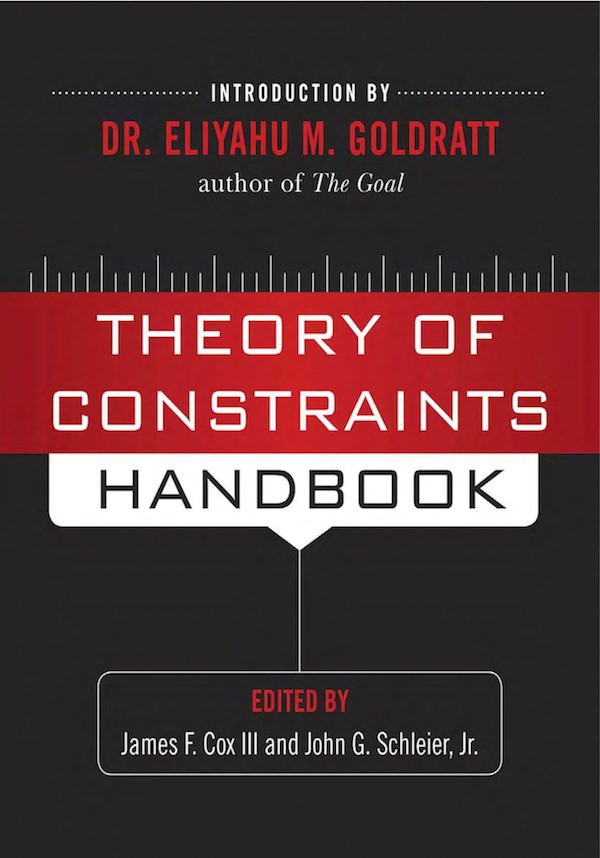Managing Make-to-Stock and the Concept of Make-to-Availability (Chapter 10 of the Theory of Constraints Handbook)
Eli SchragenheimInfo
Level of TOC knowledge acquired:
Advanced and IntermediateLength:
28 pagesDesigned for:
Consultants, Executives, Implementers, Managers and Shop Floor workersTopics:
DistributionIndustries:
Consumer ProductsApplication:
Buffer Management and Make to availabilityLanguage:
EnglishFormat:
DownloadShare
Recommend
This chapter highlights a significant change in the TOC methodology regarding make-to-stock. One of the aspects of the change is refraining from determining a due date for a production order that is for stock. Another significant change is to acknowledge the difference between make-to-stock (MTS) and make-to-availability (MTA).
MTA is a commitment to maintain availability of stock at all times. This means adopting a marketing approach coupled with operational capability. Certainly MTA means producing to stock, but not every make-to-stock order supports the commitment of full availability at all times.
The chapter deals with the current misunderstanding of forecasts, and develops the cause and effect logic behind the required planning and execution rules for MTA. The term of ‘target level’ describes the stock buffer, which is different than the regular TOC term of ‘time buffer.’
The planning decisions are centered at fixing the inventory in the system. The matched buffer management rules determine the real priorities in the shop floor.
The chapter discusses various MTA environments, like vendor-managed-inventory (VMI) and managing components for MTA, their related problems and the TOC solution for them. Also discussed is the mixed environment where make-to-order and make-to-availability exist side-by-side.
The chapter ends by highlighting certain MTS environments that are not MTA.
Content
- Why Is a Special Methodology for MTS Required?
- What to Do? The Direction of the Solution
- Monitoring the Target Level Size—Dynamic Buffer Management
- The Role of Protective Capacity and the Usefulness of Maintaining a Capacity Buffer
- Generic Issues in MTA
- Implementation Issues
Content:
- Why Is a Special Methodology for MTS Required?
- What to Do? The Direction of the Solution
- Monitoring the Target Level Size—Dynamic Buffer Management
- The Role of Protective Capacity and the Usefulness of Maintaining a Capacity Buffer
- Generic Issues in MTA
- Implementation Issues
Comprehensive coverage of the Theory of Constraints
Complete Table of contents of the Theory of Constraints Handbook
- I: What is TOC?
- II: Critical Chain Project Management
- III: DBR, Buffer Management, and Distribution
- IV: Performance Measures
- V: Strategy, Marketing, and Sales
- VI: Thinking Processes
- VII: TOC in Services
- VIII: TOC in Complex Environments
- Theory of Constraints in Complex Organizations
- Applications of Strategy and Tactics Trees in Organizations
- Complex Environments
- Combining Lean, Six Sigma, and the Theory of Constraints to Achieve Breakthrough Performance
- Using TOC in Complex Systems
- Theory of Constraints for Personal Productivity/Dilemmas
- IX: Summary
About the Authors:
James F. Cox III, Ph.D, CFPIM, CIRM, holds TOCICO certifications in all disciplines. He is a Jonah's Jonah, Professor Emeritus, and was the Robert O. Arnold Professor of Business in the Terry College of Business at the University of Georgia. Dr. Cox has written three books on TOC.
John Schleier holds TOCICO certifications in all disciplines. He was President and Chief Operating Officer of the Mortgage Services Division of Alltel, Inc., Executive Vice President of Computer Power, Inc., and Director of Office Systems and Data Delivery for IBM.









































